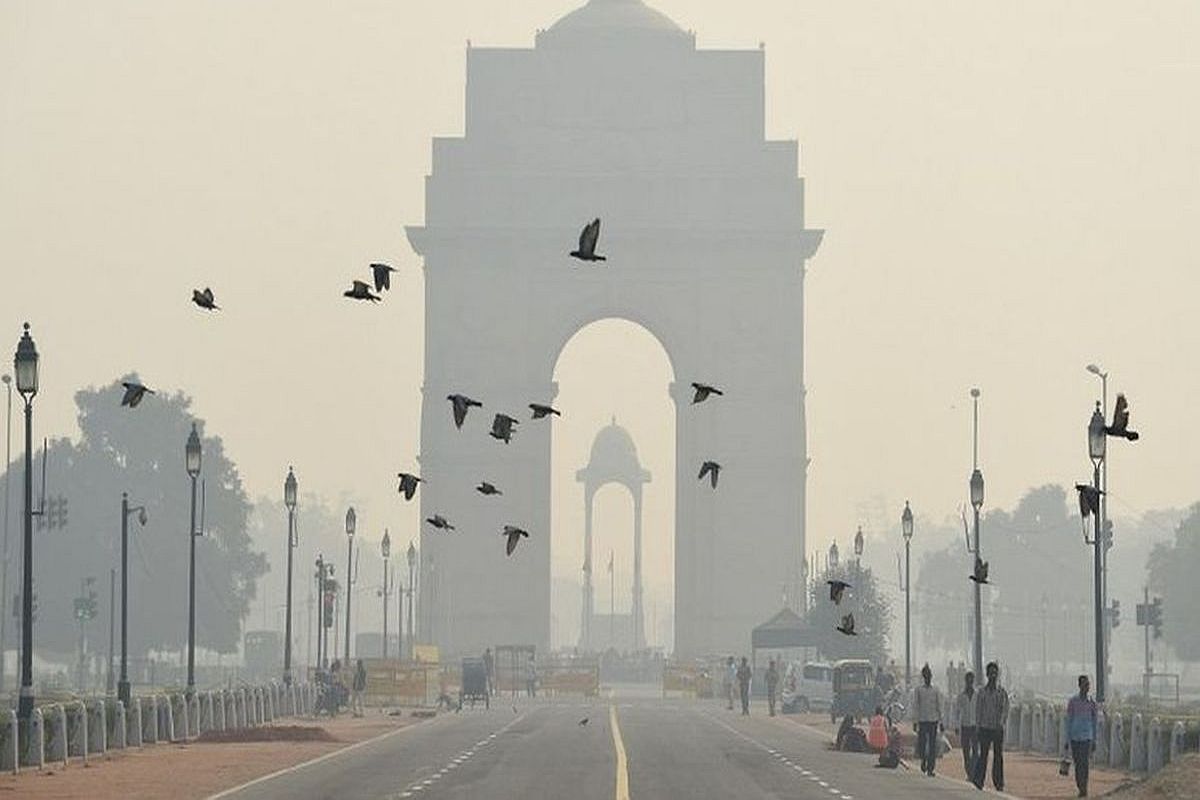Land deals in Delhi-NCR rise to 29 in FY24, Gurgaon emerges as prime location
A report by ANAROCK, a leading real estate consultancy, said these deals encompass approximately 314 acres, compared to 23 deals covering 273.9 acres in FY23.
Earlier, the Supreme Court-mandated Environment Pollution (Prevention and Control) Authority had said that local sources of pollution, including stack emissions, dust, and burning of plastic and rubber waste, were the primary reason for deteriorating air quality in Delhi-NCR.

Representational image (Photo: Getty Images)
The Delhi government on Tuesday shared pictures and data from NASA that showed large-scale stubble burning in areas surrounding Delhi. Many areas in the Delhi –NCR region recorded air quality in the “very poor” category on Wednesday morning, with particulate matter less than 10 micrometers in diameter being the primary pollutant.
Delhi Environment Minister Kailash Gehlot also wrote to Union Minister for Earth Sciences Harsh Vardhan requesting access to System of Air Quality and Weather Forecasting and Research (SAFAR)’s data so that the administration could take immediate corrective measures to curb pollution. Gehlot also claimed that stubble burning in neighbouring states through November has “always contributed significantly to higher PM2.5 levels” in the national capital.
Earlier, the Supreme Court-mandated Environment Pollution (Prevention and Control) Authority had said that local sources of pollution, including stack emissions, dust, and burning of plastic and rubber waste, were the primary reason for deteriorating air quality in Delhi-NCR.
Advertisement
The Centre-run SAFAR had on Tuesday noticed an ‘increasing trend” in stubble burning incidents in neighbouring states and predicted that the share of crop residue burning in Delhi’s PM2.5 concentration would be around 6 per cent on Wednesday.
Delhi’s overall Air Quality Index of 299 also bordered “very poor” levels. On Tuesday, it stood at 270 at 4 pm.
According to data of the Central Pollution Control Board 17 of the 37 air quality monitoring stations in the national capital recorded the overall AQI in the “very poor” category.
The AQI at Mundka, Dwarka Sector 8, Delhi Technological University, Anand Vihar, Wazirpur, Rohini, Bawana, Ashok Vihar, Nehru Nagar and Jahangirpuri was 368, 362, 355, 328, 323, 323, 320, 319, 319 and 318.
Other areas that experienced very poor air quality included Alipur (314), Narela (312), Vivek Vihar (311), Sirifort (309), CRRI – Mathura Road (304), Okhla Phase 2 (303) and ITO (302).
The NCR region comprising of Ghaziabad (337), Loni Dehat (335), Noida (318) and Greater Noida (308) also recorded a spike in pollution levels.
An AQI between 0 and 50 is considered ‘good’, 51 and 100 ‘satisfactory’, 101 and 200 ‘moderate’, 201 and 300 ‘poor’, 301 and 400 ‘very poor’, and 401 and 500 ‘severe.
From October 15, stricter measures to fight air pollution have already come into force in Delhi-NCR as part of the Graded Response Action Plan (GRAP), which was first came into force in 2017. Water was sprayed on many roads in Delhi to settle the dust.The government also banned generator sets except those used for essential and emergency services, across the national capital to curb the rising pollution.
Earlier, on Saturday, Delhi Chief Minister Arvind Kejriwal said smoke from crop residue burning in neighbouring states has started reaching Delhi and the air quality has started deteriorating. “It has been widely reported that the smoke coming to Delhi is due to the burning of stubble in Karnal, Haryana,” he said.
On Monday he requested all state governments to take measures to prevent air pollution.
Addressing a press conference, CM Kejriwal said that in the last four months Delhi’s air quality has been in ‘Good’ category and the rise in the pollution levels recently is because of the smoke from the neighbouring states.
He further said that researches and media reports have stated a rise in pollution levels from last week of October to mid-November.
Satellite trends so far have indicated much less instances of stubble burning in Punjab and Haryana this year.
(With inputs from PTI )
Advertisement